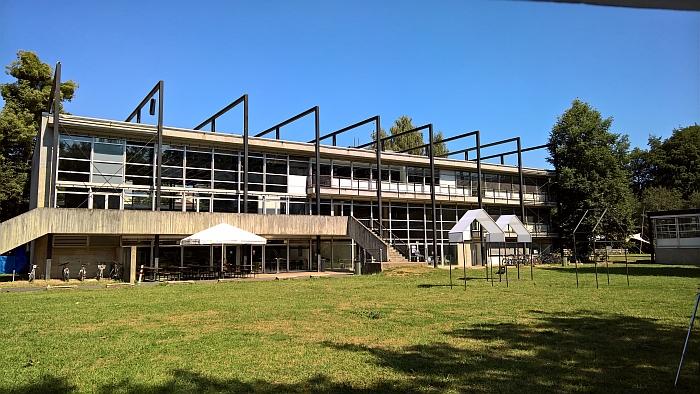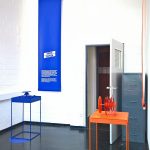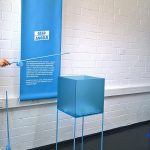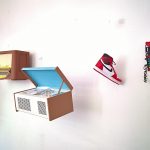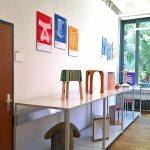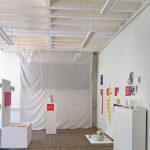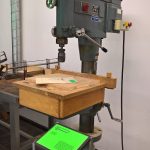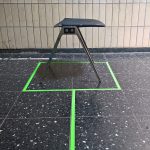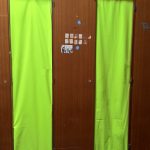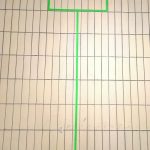#campustour 2018: Rundgang, Kunsthochschule Kassel, Germany
Kassel isn’t just birthplace of the Brothers Grimm but is also, in many regards, birthplace of the noble art of the Spaziergangswissenschaft, Strollology, a concept developed by Lucius Burckhardt during his tenure at Kassel University and which not only challenges conventional perceptions of the world around us, but for all encourages us to develop a differentiated understanding of how we perceive the world around us.
But would our stroll through the 2018 Kunsthochschule Kassel Rundgang challenge any of our established and institutionalised images? Would we see only that which custom, culture and convention programmes and preconditions us to see? Or would our eyes be opened to new understandings, a new consciousness….?
Kunsthochschule Kassel
That we (briefly) recounted the background to and history of the Kunsthochschule Kassel in our 2017 #campustour post, we refer you to that post for more information on the institution; the main change since then, and indeed the take home message from the 2018 Rundgang, is that the current Kassel design students are revolting.
Thus giving us a welcome opportunity to revisit one of the world’s great jokes.
In contrast however to 2017’s revolting HBK Braunschweig students the Kassel students are revolting in a more imaginative manner, one more satisfying, more fitting for design students, one could say, they are creatively revolting. Probably isn’t the phrase a well-paid, highly-fragrant, PR agency would choose. Is the one we’re going for.
Under the title Nichts Zeigen Zeigen [Don’t exhibit, expose], the students were protesting against the current conditions at the Kunsthochschule, including unfilled positions, a lack of teaching/appropriate machinery/investment/bravery and “altogether, from the missing, the wrong, the necessitous, the provisional, the minimal”
We know no, we aren’t familiar with the facts and therefore don’t see our input as being particularly helpful, but we do, as always, understand that protesting at an art school, an institution, invariably, staffed by those who were the first and the longest on the barricades in ’68, ain’t easy.
Therefore all the more kudos for the method chosen by the Kassel students: a green line which led visitors through the Rundgang also leading you to points of contention – missing things, broken things, provisional things, anachronistic things – while a series of posters explained the students view of the problem(s) and the type of solutions they consider reasonable. Particularly pleasing was a scenography which set the machinery in the wood workshop as exhibition pieces, a lovely piece of museal storytelling, with a nicely measured level of satire. And one which tickled us no end.
And a form of protest which evoked the spirit of Lucius Burkhardt, who in advancing his theories favoured the artistic intervention; interventions invariably involving a deliberately confrontational act imbued with more than a touch of the absurd. An absurdity which inescapably underscored the truth at the heart of the action.
As we say, we’ve not investigated the ins and outs of the dispute, that’s something for the local media, is the raison d’etre of local media; but the form of protest showed that alternatives are always possible, one just has to look for them with the appropriate freedom of thought, uninhibited by the existing and with a healthy understanding of the contemporary world.
In which context…….
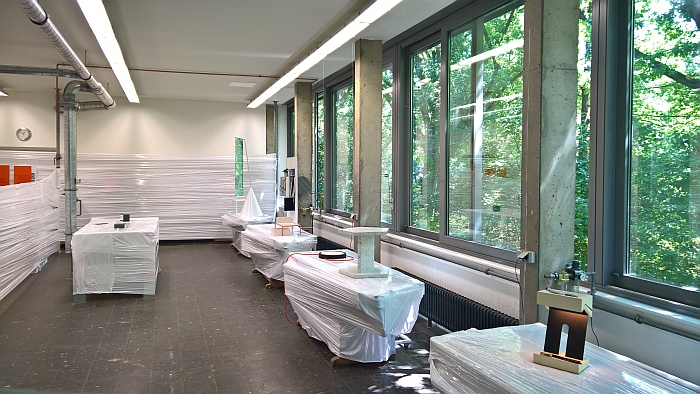
The results of the classes Bodenschätze and Aus 1 wird 2, as seen at Kunsthochschule Kassel Rundgang 2018
Kunsthochschule Kassel, Rundgang 2018
We’re not sure if it was because of the protest, but there seemed to be less on show at the 2018 Kunsthochschule Kassel Rundgang than in previous years. Normally in such a case we’d just assume we’d missed things; however, as previously pointed out, in Kassel that is neigh on impossible as the design department is a square, and so all you have to do is walk in a big circle. Which no, isn’t a contradiction. Quantity however has never equalled quality, nor should it ever be allowed to, and the projects and objects presented did help explain the work undertaken by the students and the type of themes tackled this year past.
In contrast to previous years the introductory, foundation, course undertaken by all students didn’t feature the “build a stool” class that forms such a regular component of design education, did however include the “build a paper model” class; whereby rather than the oversized copies of generic objects one tends to find, in Kassel the students were asked to build scale replicas of consumer goods, the results including a Bang&Olufsen Beocom 2000 telephone, a Braun SK4 record player, an Air Jordan sneaker and a Cone Bra. Although if the Cone Bra can actually be considered a consumer good is another question. In addition the students developed urban garden solutions from which we were very taken with Going Nuts by Hansil Heo & Adrian Lehmann: a planting box for home peanut cultivation. We’ve never considered the domestic cultivation of peanuts. Are now.
Elsewhere, and amongst many other classes, Bodenschätze asked the students to concern themselves with the properties and possibilities of a component material of the earth’s crust; a class that may, or may not, have been called Why Not Bauhaus took the coming Bauhaus Weimar centenary to challenge students to reflect on the institute and its protagonists and to update the methods and process of then for today; and Time to Transform explored the questions, why design changes, how do these changes manifest themselves and what are the consequences of these changes. Considerations which, amongst many other positions, resulted in a confluence of design rules from the likes of Dieter Rams, Kurt Weidemann, Lucius Burkhardt and Donald Norman to produce a list of 71 Rules for Good Design. A list which in its improbability deliciously tackled the notion of there being such a thing as rules for design.
While in a joint project between the Construction department of Kassel University and the Kunsthochschule’s Digital 3D Technology department students developed a proposal for a new design for the Kunsthochschule corridors, including appropriate furniture solutions; a project which contained a few interesting moments, even if the reclining bench backrest on the exhibited seating unit does implicitly imply feet on chairs. Which is truly revolting
And a project which also nicely demonstrates that students at design schools have more options for protest than their colleagues in more scientific or philological orientated institutions.
Something particularly well demonstrated by Game Over.
Kunsthochschule Kassel – Game Over
Conceived by Natascha Burk, Martin Tony Häussler, Friederike Wübbeler and Lisa Wübbeler Game Over presented a series of games designed to give you the experience of daily life at the Kunsthochschule Kassel: Stone Piling tackling the, in the students opinions, short-comings of the physical environment; Sluggish Wheels allowing insights into the Kunsthochschule’s bureaucracy; Money Angling, as the name implies challenging you to catch and land financial support; and Workshop Racing highlighting the, according to the students, problems associated with the current workshop facilities situation in Kassel.
And was one of the most imaginative, inventive and poetic forms of protest we’ve seen in a long time. Calm, considered, matter of fact, playful, engaging, subversive yet unmistakable in the directness of its message.
We like to think Lucius Burkhardt would also have approved.
Full details on the Kunsthochschule Kassel can be found at www.kunsthochschulekassel.de
- Game Over, as seen at Kunsthochschule Kassel Rundgang 2018
- Angling for financing, part of Game Over, as seen at Kunsthochschule Kassel Rundgang 2018
- Examples of the cardboard models realised in the Grundlagen course, as seen at Kunsthochschule Kassel Rundgang 2018
- The Butterfly Project, as seen at Kunsthochschule Kassel Rundgang 2018
- Presentation of results from the project Time to transform, as seen at Kunsthochschule Kassel Rundgang 2018
- An Flott SB 23 drill, as seen at Kunsthochschule Kassel Rundgang 2018
- Nichts Zeigen Zeigen: A Chair, as seen at Kunsthochschule Kassel Rundgang 2018
- Nichts Zeigen Zeigen: Lockers, as seen at Kunsthochschule Kassel Rundgang 2018
- Nichts Zeigen Zeigen, as seen at Kunsthochschule Kassel Rundgang 2018
Tagged with: #campustour, Kassel, Kunsthochschule Kassel, Nichts Zeigen Zeigen
